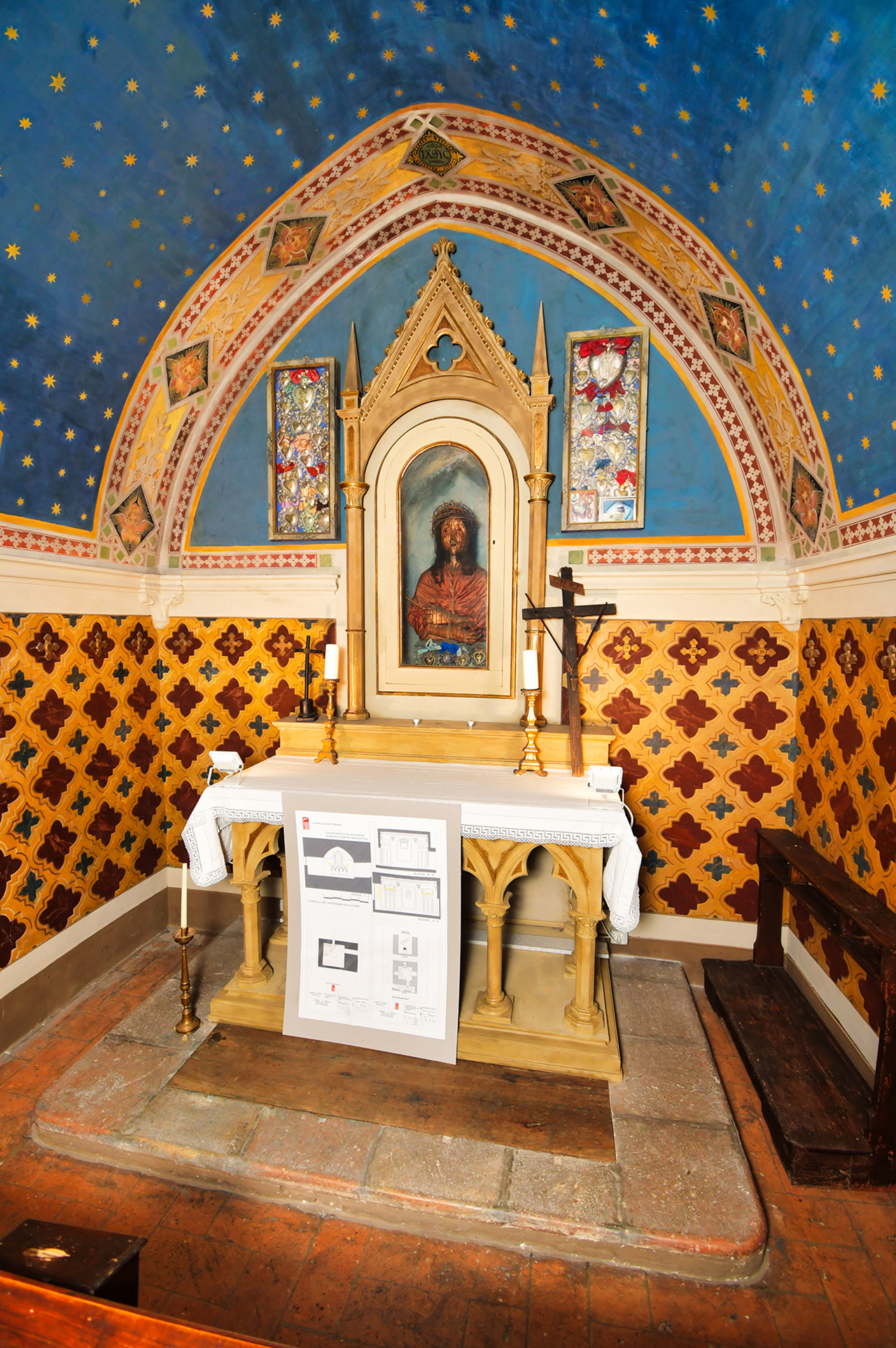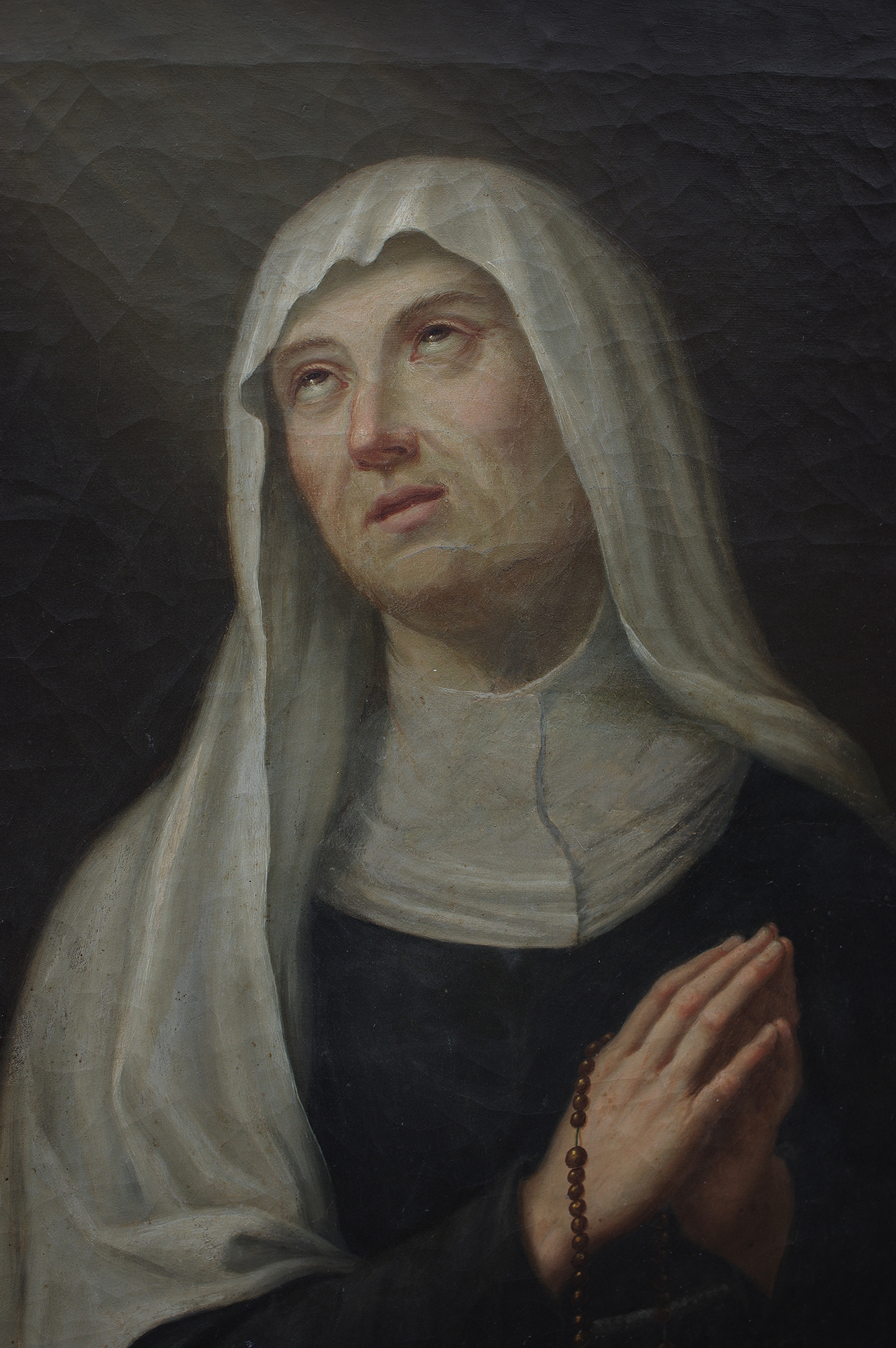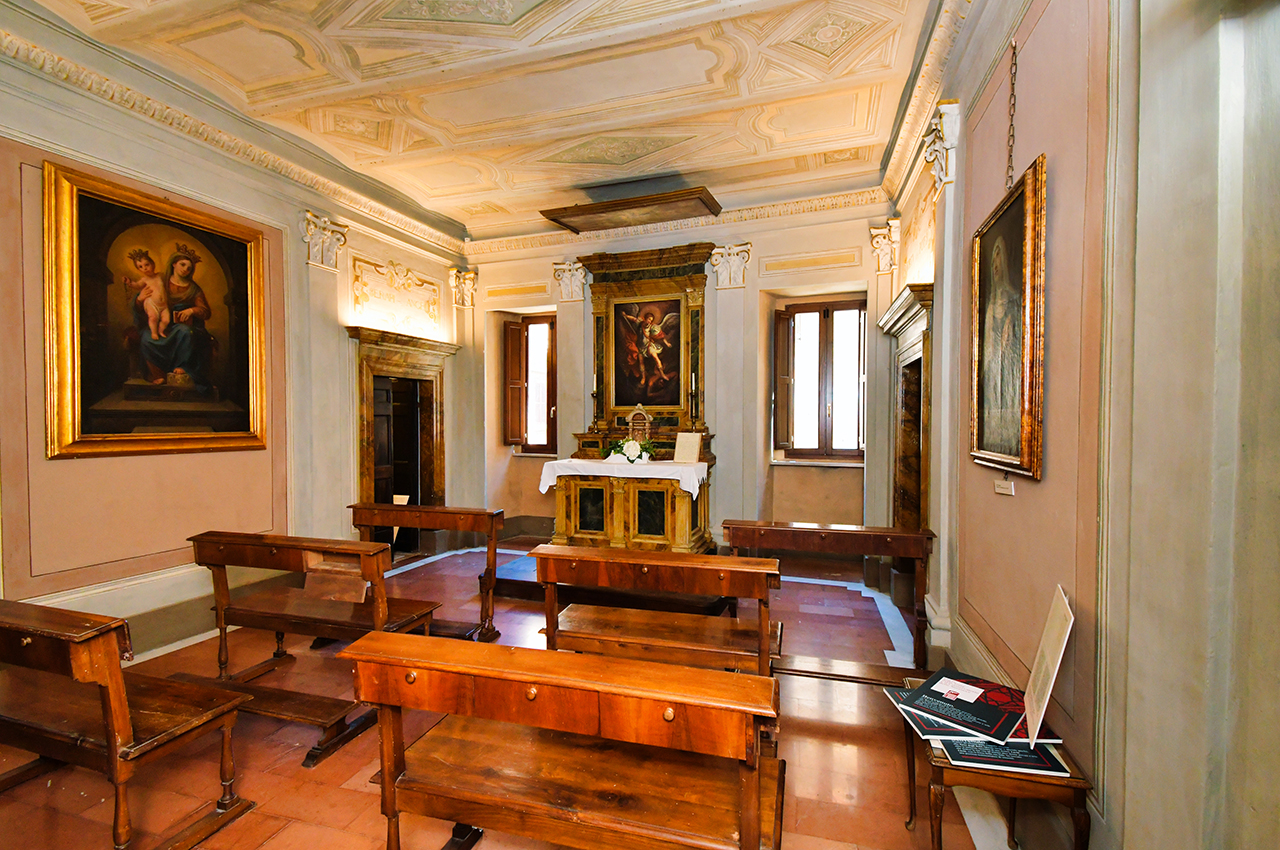



‘Lucia della Torre’ and the Conservatory of the Suorucce (little sisters). Lucia Tartaglini was born in Cortona in 1629, her family, renowned and secular in Cortona, was composed of writers, doctors, artists, clergy and contractors.After a troubled youth due to the early loss of her father, Francesco d ‘Agnolo, and for the wrong choice to wear the Dominican dress, Lucia chose to ‘convert’ to the Third Orde of St. Francis, refusing to enter the monastery to stay at home with her mother, Felice Buchi, and with her older sister, Giulia, a Dominican tertiary. Lucia‘s fervent devotion sparked ecstasy and visions of Christ, badly received by her brothers, who in various ways tried to hinder her path of mysticism, fostering her matrimonial way, which she constantly refused, preferring to devote herself to charitable practice. Lucia hosted at her home many women from Cortona at risk of prostitution and degradation, single and abandoned women, teaching them to weave and live off their work. Jacinta of Gerolamo Albertini was one of his first protégés and the two women remained together for the rest of their lives. Lucia‘s older brother, Giovan Battista, had graduated in medicine from the Perugian Studium and his nephew, Domenico Tartaglini, after completing his university studies, had stayed to live in Perugia.

Lucia‘s fate was decided by her brother Bernardo, who declared bankruptcy, forcing them to abandon Cortona. In 1670, helped by the noblewoman Loreta Battisti, Lucia found shelter in Perugia with Sister Margherita della Croce, a Franciscan. Through the intercession of Father Tommaso Guzzoni of the Church of the Oratorian Fathers, the Graziani lords made available to the three women a house, in which Lucia set up a spinning workshop and in which she herself worked on the art of wax modeler, shaping small crucifixes and busts of Christ, upon request. Upon the death of her mother and sister, Lucia decided to found a Conservatory for girls and single women. In 1680, with the financial contribution of Countess Caterina Della Penna Oddi, Lucia signed the deed with which she became the owner of the house of Tower of Sciri in Porta Santa Susanna. Lucia worked hard to implement her welfare plan for “poor abandoned spinsters”.Sister Lucia della Torre, as the documents remind her, was mother superior of her conservatory until her death, for her own Little Sisters she made the majestic Ecce Homo in wax, until the early twentieth century considered a miraculous object and invested with thaumaturgic powers by the Perugians, which the author kept hidden in her room, inside a wooden box, and which, only after her death, the Little Sisters placed in the Chapel of the Most Holy Saviour inside the conservatory. In addition to the sculptural activity, Lucia wrote three books: Lights Received for Souls, The Ark of the Soul, Calvary and some homilies, which allow us to include her next to the most famous mystics of her time, such as Veronica Giuliani, fully inserted in the religious and cultural climate of the seventeenth century.


Lucia Tartaglini died on January 17, 1713, in the cell of her conservatory. Attempts at beatification and post-mortem miracles followed, as well as active research by his last confessor father, the oratorian Carlo Olivieri to write a biography of the tertiary, published in a reduced version in 1786 by Niccolò Maria Galli. According to the testamentary will of its founder, the conservatory maintained its structure as a welfare agency for single women, under the jurisdiction of the Philippine Fathers, until, at the end of the twentieth century, it became completely extinct. The life, thought, documents and manuscript works of Lucia have been collected in the monograph You are a shadow: Lucia Tartaglini from Cortona to Perugia (1629- 1713) published by Mazzafirra Editrice, May 2017.


